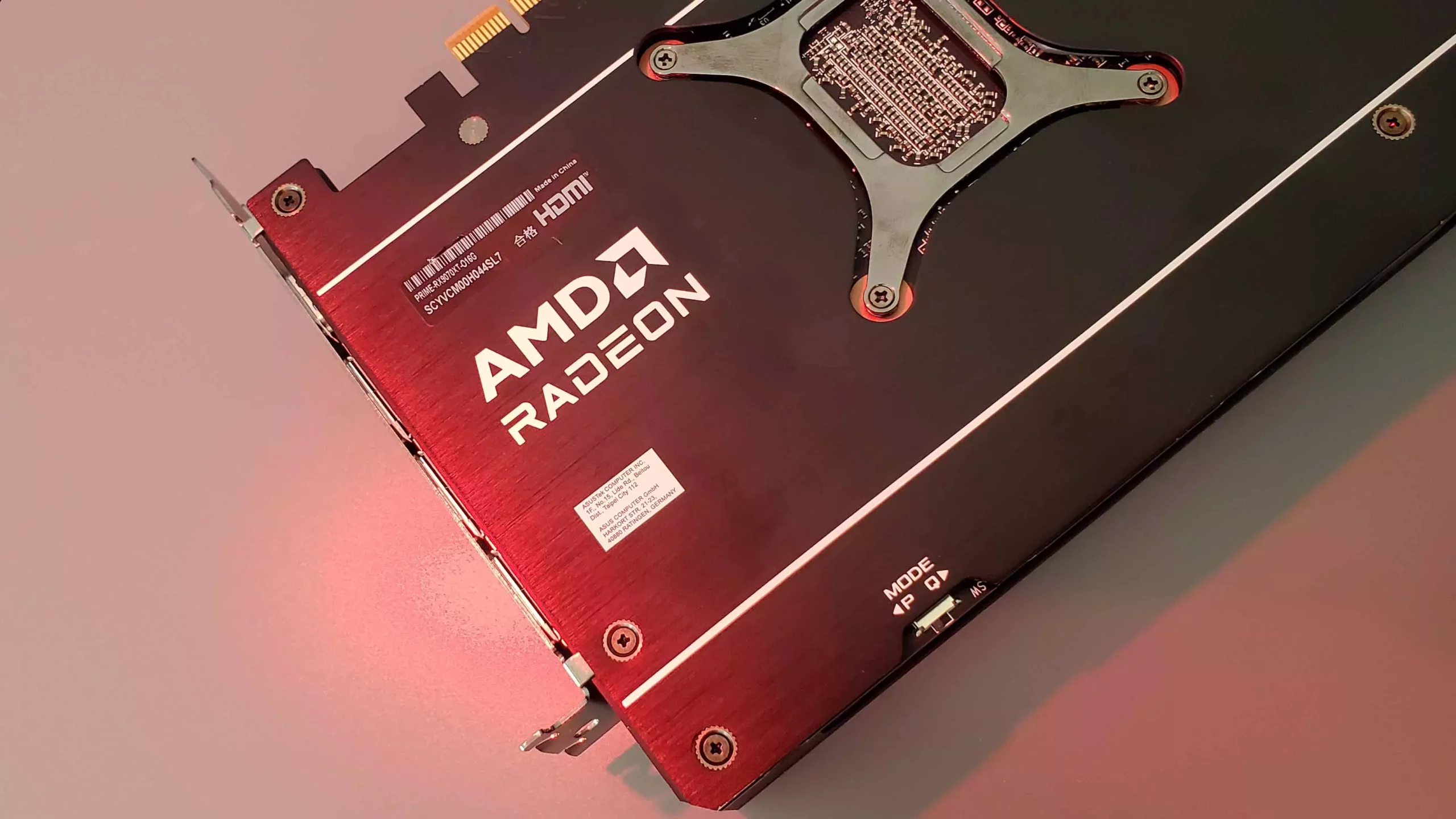AMD’s recent quarterly report offers a compelling narrative of resurgence and potential dominance within the gaming hardware landscape. A staggering 73% increase in gaming revenue compared to the previous year reflects not only market expansion but also the compelling allure of AMD’s latest graphics solutions. At the heart of this surge is the RX 9000-series, which has captivated gamers and system builders alike. The figures reveal more than just impressive numbers; they underscore a paradigm shift where AMD is emerging from the shadow of its erstwhile competitor to command significant attention. The success isn’t merely about hardware sales; it’s about redefining perceived value and performance standards in the industry.
What stands out is AMD’s CEO Dr. Lisa Su’s acknowledgment of “very strong” demand that “outpaces supply.” Such a statement is rare in the tech world, where supply constraints often temper enthusiasm. This phenomenon signals not just consumer fervor but also a fundamental transformation in AMD’s production capabilities and market positioning. In essence, AMD is not only gaining share but catalyzing a cultural shift where Radeon graphics cards are now seen as competitive, desirable, and, crucially, essential components for gaming rigs.
Supply Challenges and Market Dynamics
However impressive these developments are, they come with notable complications. The scarcity of Radeon RX 9000-series cards has led to a highly inflated secondary market, where prices soar well above manufacturer suggested retail prices. This phenomenon reveals a classic supply-demand imbalance—one that might threaten long-term brand loyalty if unaddressed. AMD’s limited selection of high-end RDNA 4-powered cards further compounds the issue, creating a bottleneck for consumers who are eager to upgrade but find themselves priced out or unable to purchase at retail.
Meanwhile, AMD’s older RX 7000 series has nearly vanished from shelves, aside from the RX 7600, which remains relatively available. This shortage underscores an industry-wide challenge: maintaining a balanced product pipeline to sustain demand without alienating the broader gaming community. The scarcity not only fosters frustration but also cements the perception that AMD’s current offerings are some of the best available, albeit hard to obtain. It raises the question of whether AMD’s supply chain issues will hinder its momentum or serve as a catalyst for future improvements.
OEMs and the Broader Gaming Ecosystem
Despite the hype around Radeon graphics cards, a significant chunk of AMD’s gaming revenue originates from the console market. The PlayStation 5, PS5 Pro, Xbox Series X, and Series S all incorporate custom AMD chips, ensuring a continuous revenue stream for AMD beyond discrete graphics cards. This strategic positioning highlights a nuanced understanding from AMD: gaming innovation isn’t confined solely to PC hardware but extends into the living rooms and gaming lounges of millions around the globe.
The collaboration with Sony and Microsoft on advanced technologies like FSR 4 exemplifies AMD’s foresight. Using AI-driven upscaling and frame generation, this technology promises to elevate gaming experiences on all platforms, translating innovations from consoles to PCs seamlessly. For AMD, this partnership isn’t just about hardware—it’s about shaping the future of interactive entertainment, leveraging AI to produce transformative visual fidelity and performance.
The Road Ahead: Challenges and Opportunities
While AMD’s recent success is undeniable, the road ahead is riddled with both challenges and opportunities. Improving supply chain resilience remains critical; without consistent availability, even the most compelling hardware risks losing its momentum. The company’s potential to lower prices could democratize access, fostering broader adoption of Radeon hardware. Such a move might not only boost sales but solidify AMD’s reputation as a consumer-friendly brand in a space often dominated by premium pricing and limited availability.
Furthermore, as AMD continues to innovate through collaborations like FSR 4, the industry should brace itself for a new era of AI-powered gaming enhancement. The integration of custom AI solutions into both graphics cards and APUs could redefine what gamers expect from their machines. AMD’s strategy to embed such cutting-edge technologies positions it as a leader—not just in hardware, but in shaping the future of immersive digital experiences.
AMD’s current trajectory suggests a company that is finally living up to its potential, transforming industry dynamics and challenging long-standing hierarchies. If it can navigate its supply issues while continuing to innovate at the forefront of AI-driven gaming solutions, AMD could very well become the standard-bearer for generations of gamers to come.

